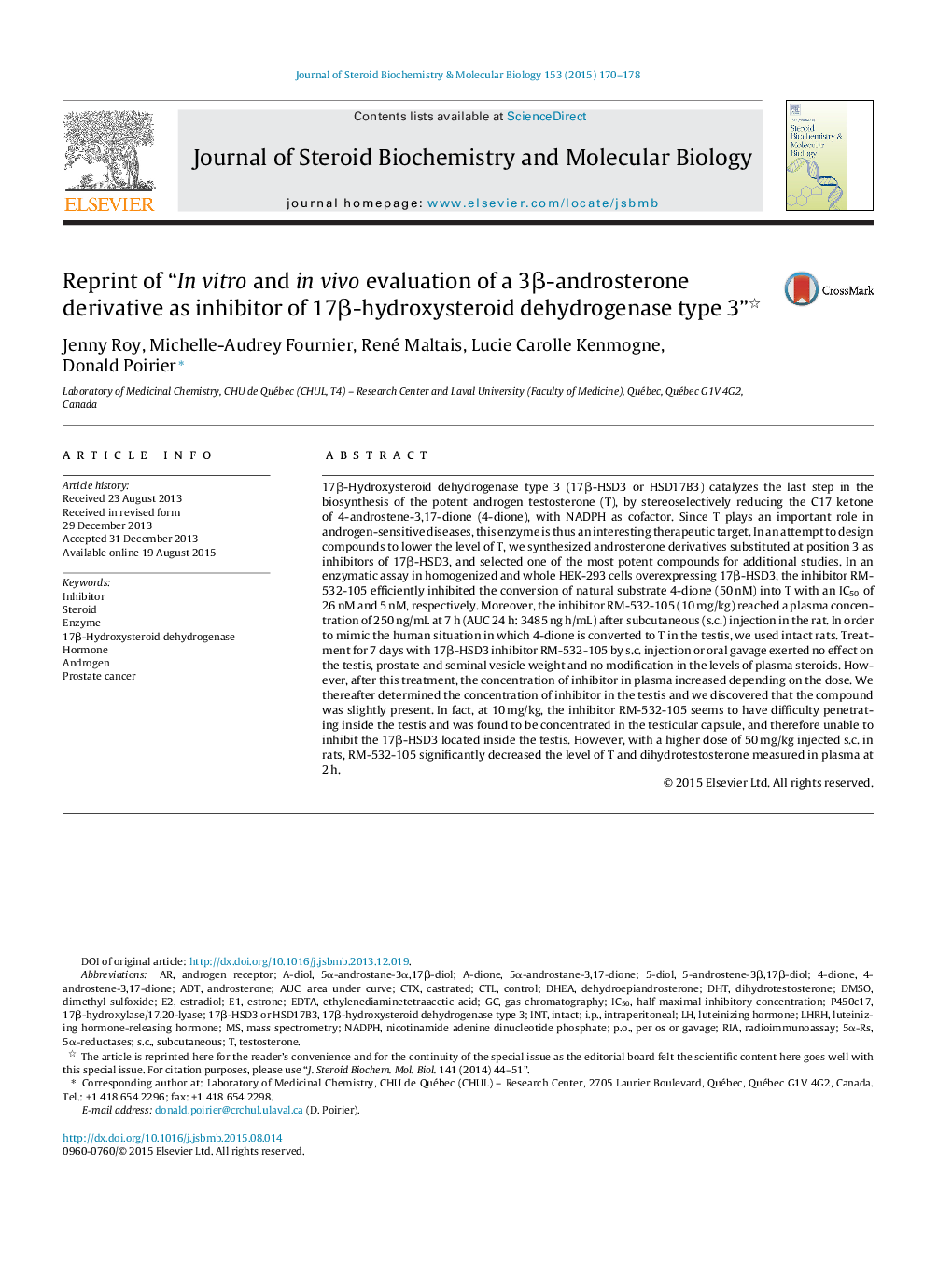| کد مقاله | کد نشریه | سال انتشار | مقاله انگلیسی | نسخه تمام متن |
|---|---|---|---|---|
| 1991268 | 1540996 | 2015 | 9 صفحه PDF | دانلود رایگان |

• 17β-HSD3 is involved in the formation of androgenic hormone testosterone (T).
• RM-532-105 is an androsterone derivative inhibiting 17β-HSD3.
• RM-532-105 inhibits the formation of T in homogenized and whole HEK-293 cells overexpressing 17β-HSD3.
• RM-532-105 (10 mg/kg, s.c.) reached a plasma concentration of 250 ng/mL at 7 h in rat.
17β-Hydroxysteroid dehydrogenase type 3 (17β-HSD3 or HSD17B3) catalyzes the last step in the biosynthesis of the potent androgen testosterone (T), by stereoselectively reducing the C17 ketone of 4-androstene-3,17-dione (4-dione), with NADPH as cofactor. Since T plays an important role in androgen-sensitive diseases, this enzyme is thus an interesting therapeutic target. In an attempt to design compounds to lower the level of T, we synthesized androsterone derivatives substituted at position 3 as inhibitors of 17β-HSD3, and selected one of the most potent compounds for additional studies. In an enzymatic assay in homogenized and whole HEK-293 cells overexpressing 17β-HSD3, the inhibitor RM-532-105 efficiently inhibited the conversion of natural substrate 4-dione (50 nM) into T with an IC50 of 26 nM and 5 nM, respectively. Moreover, the inhibitor RM-532-105 (10 mg/kg) reached a plasma concentration of 250 ng/mL at 7 h (AUC 24 h: 3485 ng h/mL) after subcutaneous (s.c.) injection in the rat. In order to mimic the human situation in which 4-dione is converted to T in the testis, we used intact rats. Treatment for 7 days with 17β-HSD3 inhibitor RM-532-105 by s.c. injection or oral gavage exerted no effect on the testis, prostate and seminal vesicle weight and no modification in the levels of plasma steroids. However, after this treatment, the concentration of inhibitor in plasma increased depending on the dose. We thereafter determined the concentration of inhibitor in the testis and we discovered that the compound was slightly present. In fact, at 10 mg/kg, the inhibitor RM-532-105 seems to have difficulty penetrating inside the testis and was found to be concentrated in the testicular capsule, and therefore unable to inhibit the 17β-HSD3 located inside the testis. However, with a higher dose of 50 mg/kg injected s.c. in rats, RM-532-105 significantly decreased the level of T and dihydrotestosterone measured in plasma at 2 h.
Figure optionsDownload as PowerPoint slide
Journal: The Journal of Steroid Biochemistry and Molecular Biology - Volume 153, September 2015, Pages 170–178